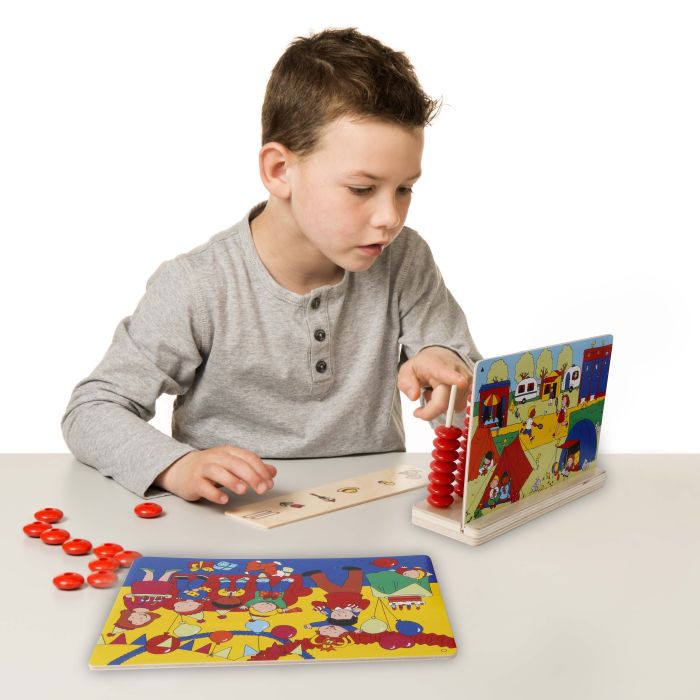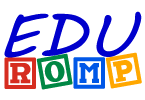Learning With Toys For Life

Toys for Life is a new brand we introduced to Malta in 2020. It is a range of educational products made to enhance home education and supports play-based learning through active hands-on materials. It inspires growth and success for children aged 3-7 years and are divided in 3 domains : Language, Mathematics and Motor Development.
Let’s talk about Language!
By the ages of 3-6 years a child becomes increasingly advanced in the areas of speech and language development. Some milestones that a child will reach through this period (please note that each child develops at different rates so some might reach certain milestones earlier or later than others) are listed down below:
Milestones for children aged 3-4 years
Can name an object and describe function size and shape
Able to follow 2-3 step directions
Understand concepts such as Under, over, behind and next to
Answer questions like, who what where and when and how
Vocabulary of words between 500-1000 words
Able to form sentences with four words (increasing as they grow) to communicate ideas, needs and wants
Milestones for children aged 4-6 years
Able to name a few letters and increase with time
Be able to group objects according to shape , colour, number and size
Able to use rhyming words
Able to tell a story as well as listen to stories and answer simple questions about it
Reaches an expressive vocabulary of 2,600-7,000 words and receptive or understanding of 20,000 words.
Toys for Life Language products aid in increasing Vocabulary, communication and visual discrimination.
It is important for children to develop strong vocabulary skills as it helps in all areas of communication such as speaking, reading, listening and writing and it will help them to express themselves in a clear and meaningful way. It is important to start developing vocabulary skills during the early years and to continue to encourage and enhance it as the child grows.
Peek and Tell, What is the opposite? Search and Find, Complete the item, Match 3 , and Word Bingo are hands on products that can help to enhance vocabulary as well as turn taking, sorting or grouping and matching. The child is encouraged to name and describe pictures during play.
Communication is important as a child can express his/her feelings, needs and want as well as have a meaningful conversation with others. Tell the story and Peek and Tell enhance logical thinking and story telling skills. It stimulates children to create their own story.
The Animal Logic game enhances analytical and creative thinking Language and critical thinking develop simultaneously and one nurtures the other. Their language skills expand because they’re encouraged to develop and use more complex language with words like “because”, phrases with “if” and “then” and different verb tenses. On the other hand, as children’s language development progresses, their ability to think critically grows as well. Moreover when it comes to reading children must go beyond being able to recognise letters, sounds and words, they also need to understand or ‘read between the lines’ to understand context and implied meaning in the book. Encouraging this in the early years will help a child understand books later on in life.
Visual Discrimination is a foundation skill that your child will build on when he'/she's ready to learn to read and write. Learning to identify and recognize similarities and differences of colours, shapes , letters, number and position of objects helps children to develop visual discrimination skills like visual memory skills which are not only needed for reading and writing but also for Maths. Feel the letter, Stamp the letter, Search and find enhance visual discrimination skills, as well as develop fine motor skills and spatial insights
Mathematics
Mathematics plays an important role in child development as it enables children to make sense of the world around them. Maths skills may be thought from the early years to build a robust foundation which will help children succeed through primary school and beyond. Maths in pre-schoolers can start with activities such as exploring shapes, patterns, sizes and counting numbers and it can be integrated with various types of play such as playing with blocks, outdoor play and science play. Children should also be encouraged to try and solve problems and talk about or discuss their findings.
Some preschool Maths Concepts are listed below:
• Observation
• Problem Solving
• Number Sense
• Shapes
• Spatial Sense
• Sets and Classifying
• Comparing
• Patterning
• Counting
• Measurement
• Parts and Wholes
• Numbers and Symbols
Some tips on what a 3-4 year old should know
• Recognize shapes in the real world
• Start sorting things by colour, shape, size, or purpose
• Count up to at least 20 and accurately point to and count items in a group
• Understand that numerals stand for number names (5 stands for five)
• Use spatial awareness to put puzzles together
• Start predicting cause and effect (like what will happen if they drop a toy in a tub full of water)
Some tips on what a 4-5 year old should know
• Add by counting the fingers on one hand 1, 2, 3, 4, 5 and starting with 6 on the second hand
• Identify the larger of two numbers and recognize numerals up to 20
• Copy or draw symmetrical shapes
• Start using very basic maps to find a “hidden treasure”
• Begin to understand basic time concepts, like morning or days of the week
• Follow multi-step directions that use words like first and next
• Understand the meaning of words like unlikely or possible
Some tips on what children 6-8 years should know
• Predict what comes next in a pattern and create own patterns
• Know the difference between two- and three-dimensional shapes and name the basic ones (cubes, cones, cylinders)
• Count to 100 by ones, twos, fives, and tens
• Write and recognize the numerals 0 to 100, and the words for numbers from one to twenty
• Do basic addition and subtraction up to 20
• Read and create a simple bar graph
• Recognize and know the value of coins
The toys for Life Mathematics range aims to teach a child about colours, shapes, counting sorting and serializing.
Learning about Colours and Shapes helps children to organise visually and recognize different signs and symbols. It is a key way for us to describe and categorize our world. Learning about colours and shapes helps children with verbal communication, sorting and classifying, letters and numbers as well as recognize key symbols in health and safety. Products that help a child learn about Colour and Shape are Build the tower , Stick the Shape, Sort the Beads, Rings and Sticks, Build a Flower. Sort the Figure, Sort the Bears and From Dark to Light. Some of these products also have other benefits such as developing fine motor skills and patterning.
Sorting is an important skill as it helps children to analyse similarities, differences and classify objects into different groups. This will enable them to develop thinking skills and problem solving. Practice with sorting will also give children an understanding of numerical concepts and grouping, as well as patterning which is the basis of algebra that will be needed later on in life. Sort the Beads, Sort the Figure and Sort the Bears are great sets to start children with sorting concepts.
Visual analysis skills are the active processes for ‘locating, selecting, extracting, analysing, recalling and manipulating’ relevant information in the visual environment and they help children to identify small difference in numbers. Rings and Sticks encourages the practice of visual analysis in children
Spatial Orientation helps a child learn how an object interacts with space. It is an important skill needed for geometry and algebra. Build a flower, Sort the figure and Build the Figures help children learn about spatial orientation and reasoning.
Counting, addition and Subtraction are important concepts to learn at an early age. A robust foundation will help children with more mathematical concepts later on in life. From 1-10, Find and Count, Count the Apples and Mathematics Bus are fun interactive resources from which children will learn basic counting, addition and subtraction.
Learning about volume help children learn about the amount of space an object takes up. From Full to Empty introduces children volume and concepts such as ‘more than’ and ‘less than’.
Patterning helps children learn how to make logical connections and use reasoning skills. The ability to learn and recognize patterns helps children make predictions on their observations which is an important maths skill as it helps them learn about complex numerical concepts and mathematical concepts. Sort the Beads and Build the Figures help children learn Patterning skills.
Learning about time is important for children as they will need it later on in life to be able to manage their time successfully. What time is it as good introduction resource for ages 5+ for children to start learning how to read the time.
Motor Development
The Third Range of Resources for Toys for Life is that of Motor Development specifically designed to enhance Fine Motor and eye-hand coordination skills. Besides the range designed specifically for this purpose, you will also find that in both Language and Maths Range, some items will also help to develop these skills.
Fine motor skills and eye hand coordination involve the smaller muscles of the hand. They are needed to help children perform tasks that are small and precise, which will be needed in activities of daily living such as buttoning, lacing, and writing. Hammer Tic, Look and Lace, Build with Beads and Lace the Sea Animals are all resources to help develop the Fine Motor Skills.


























